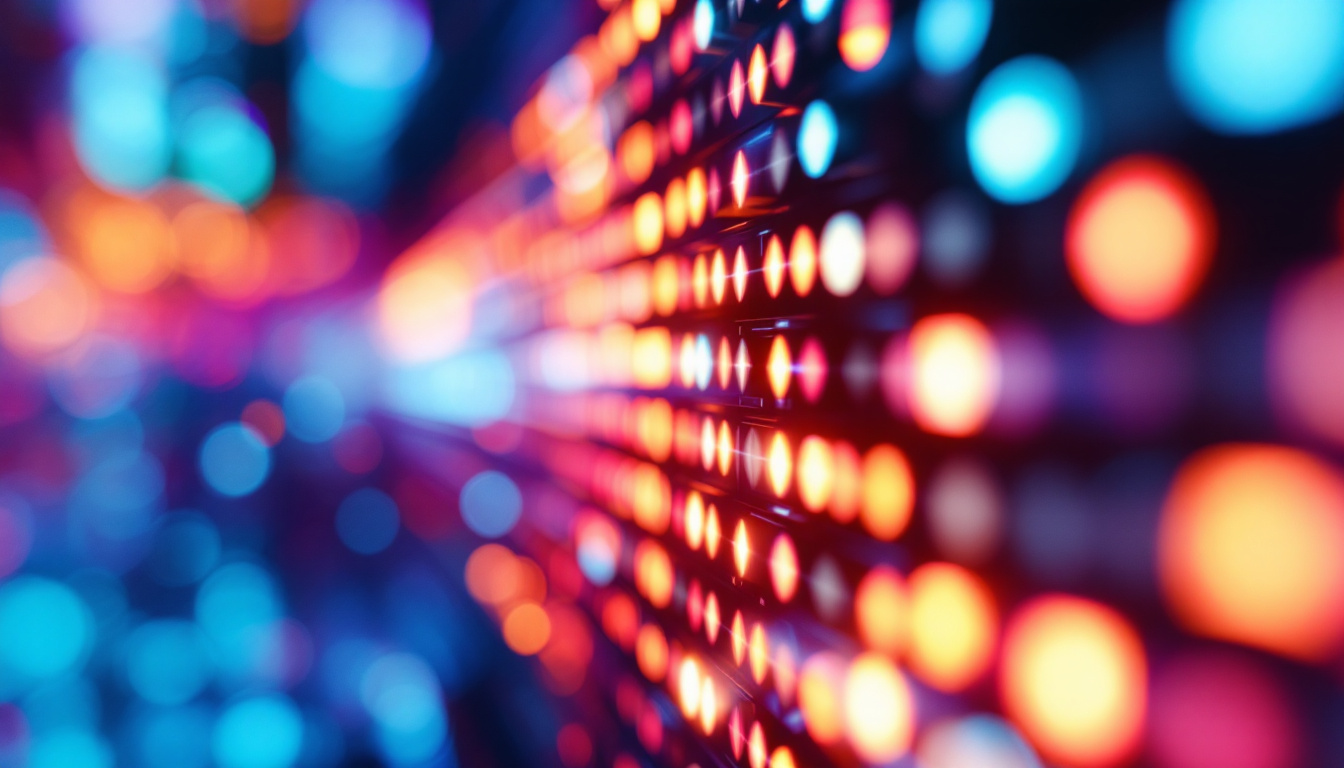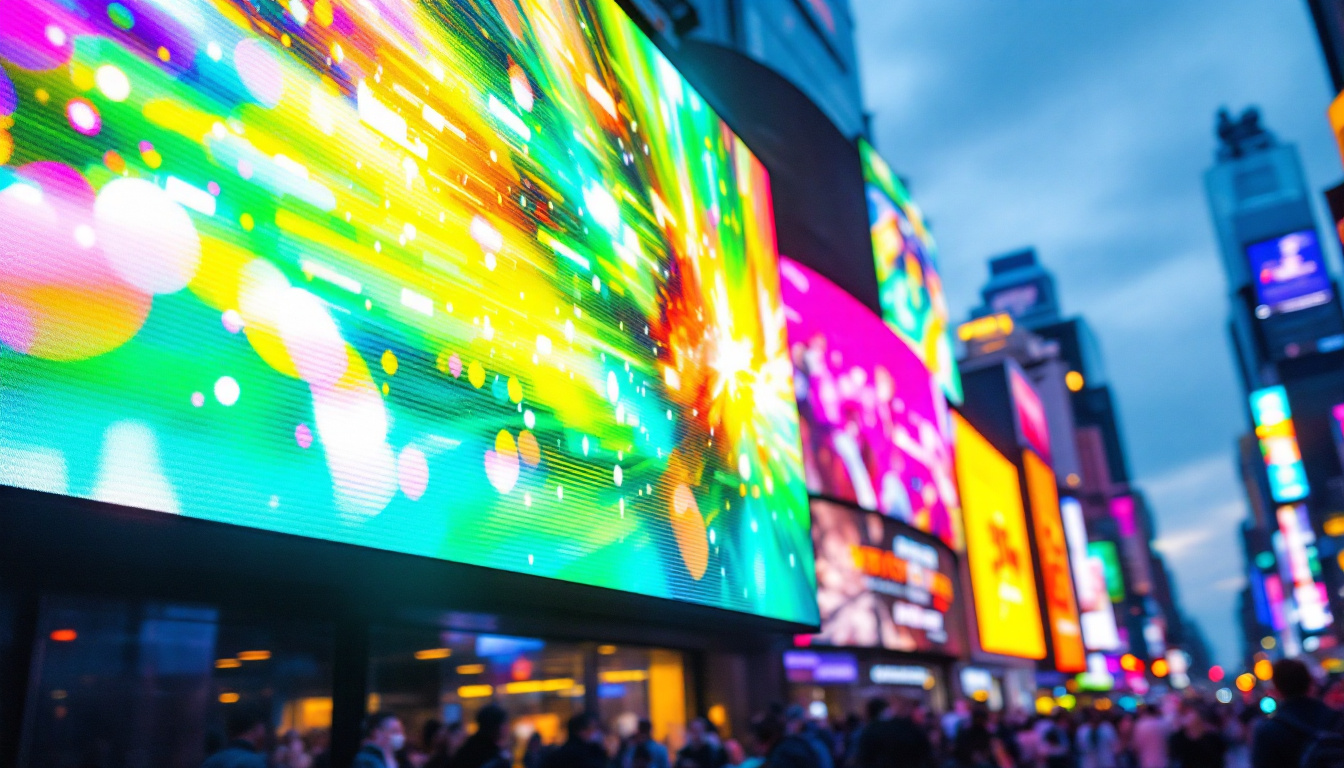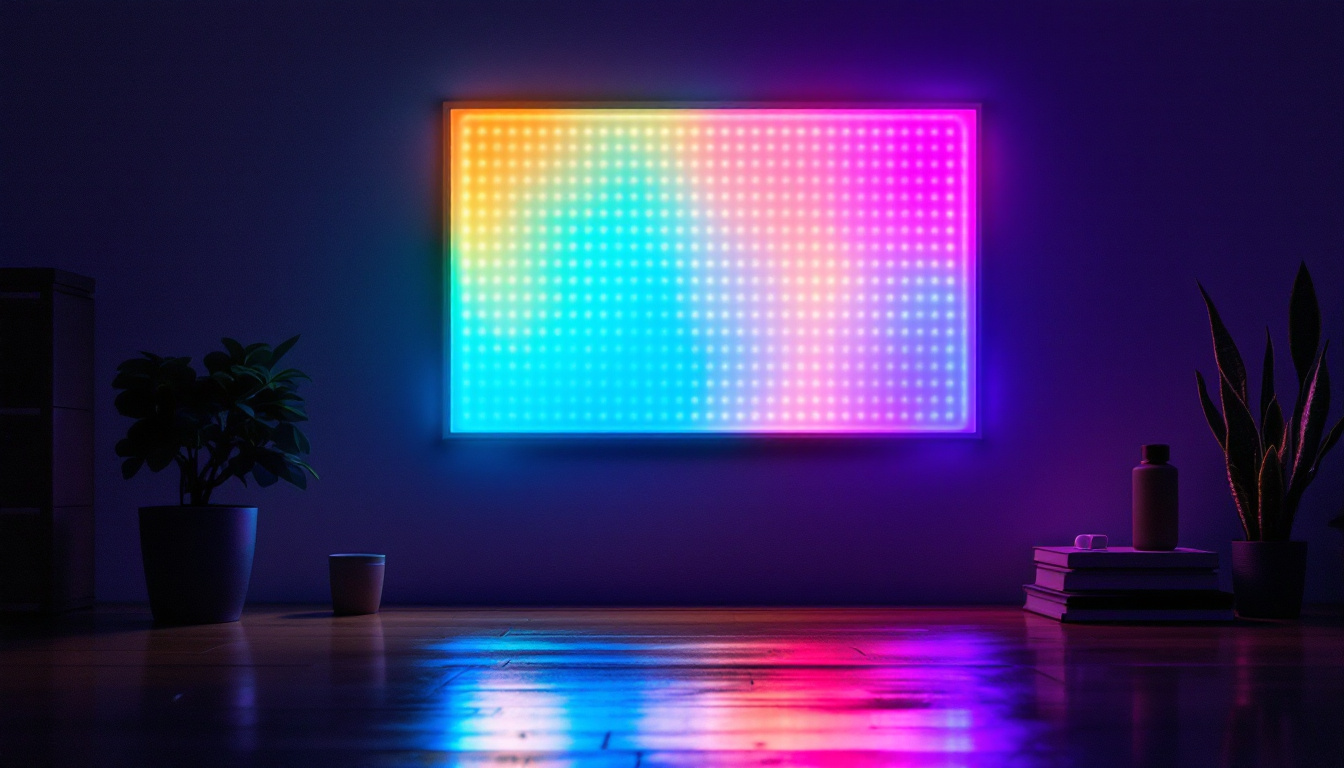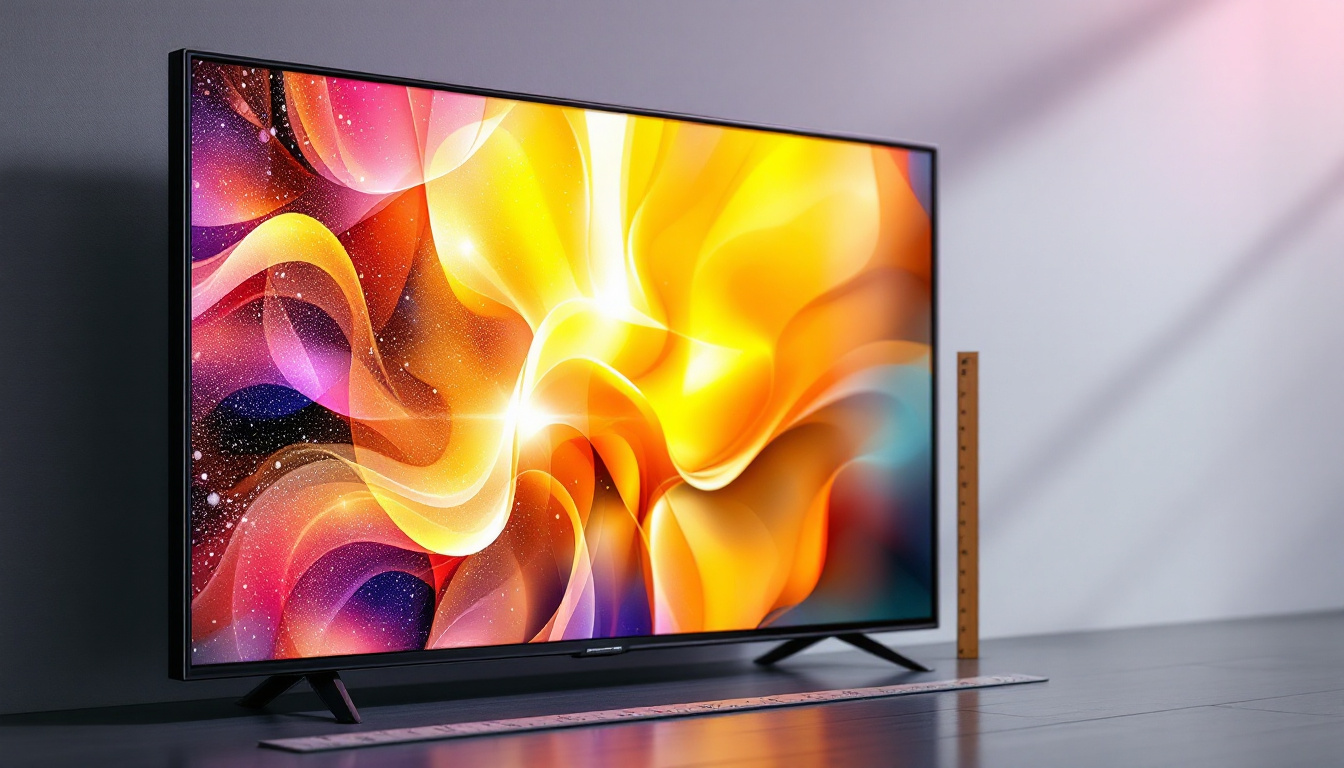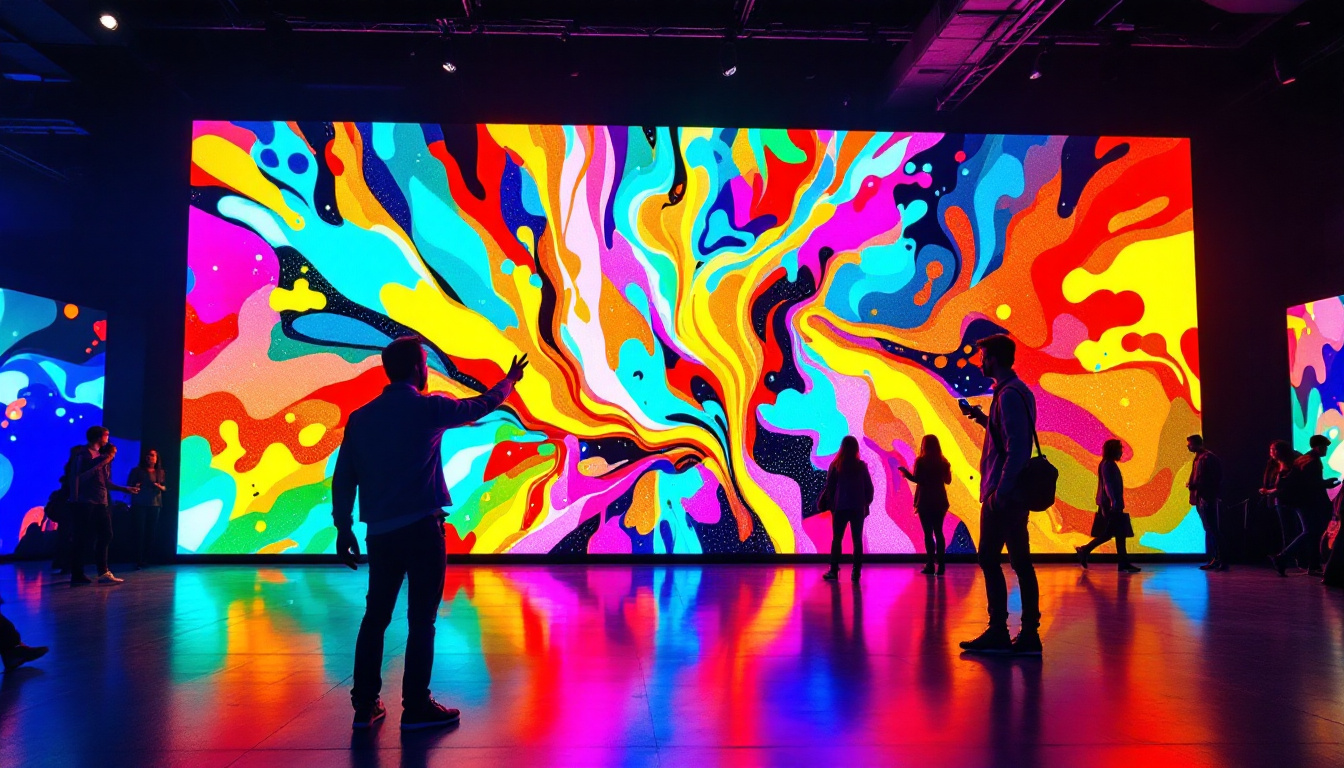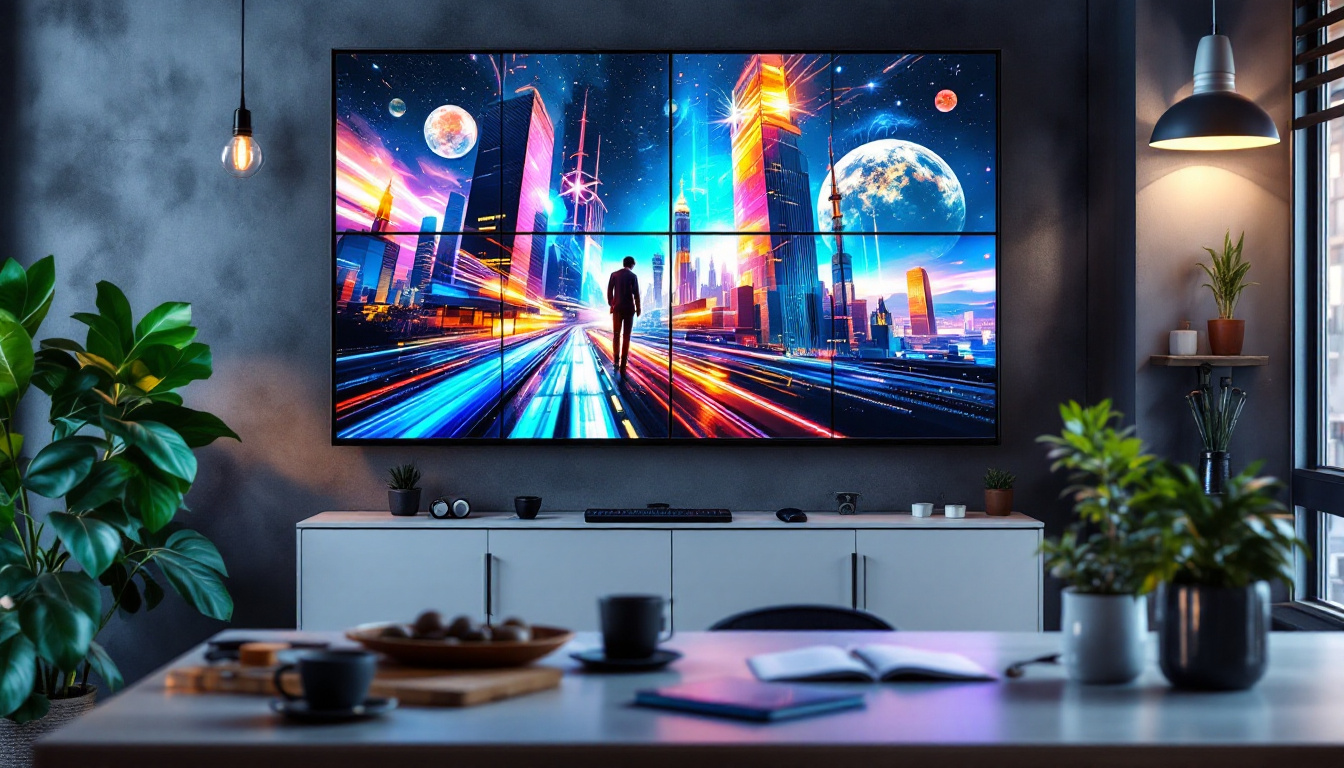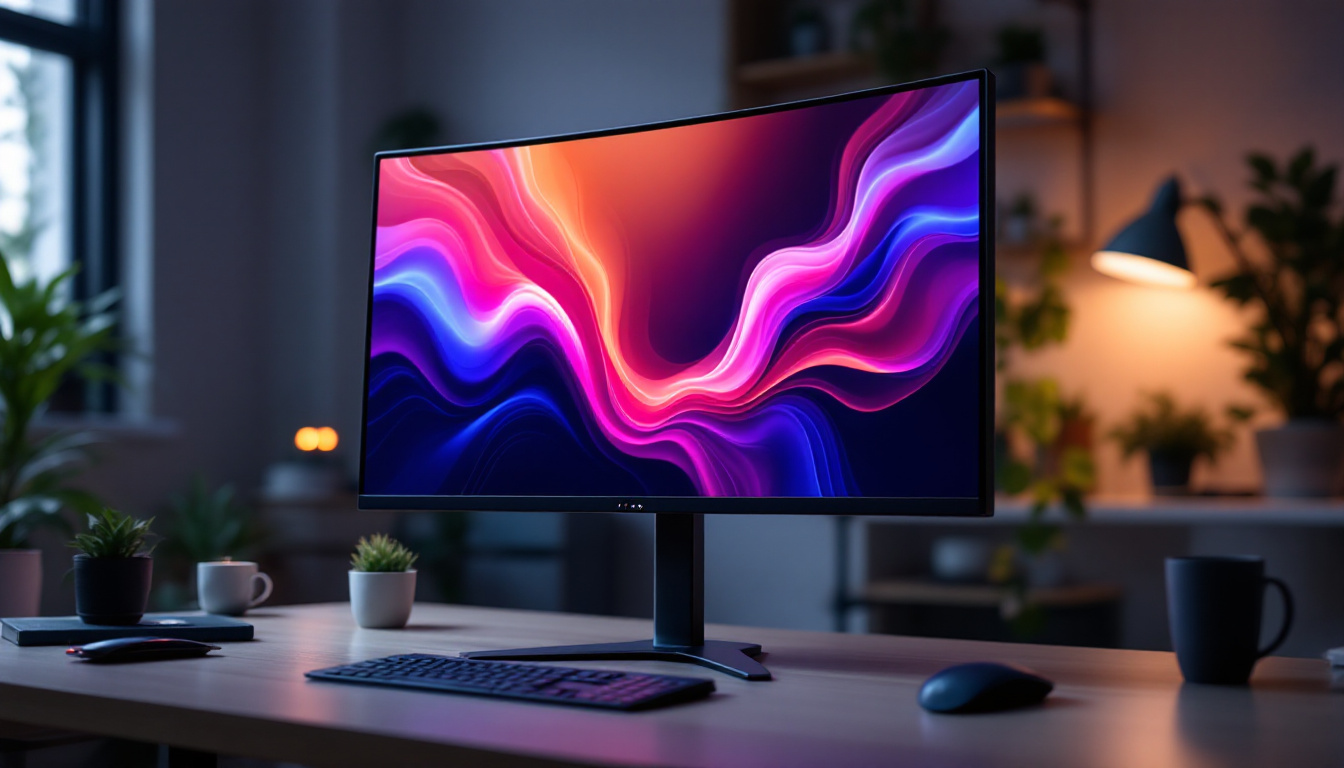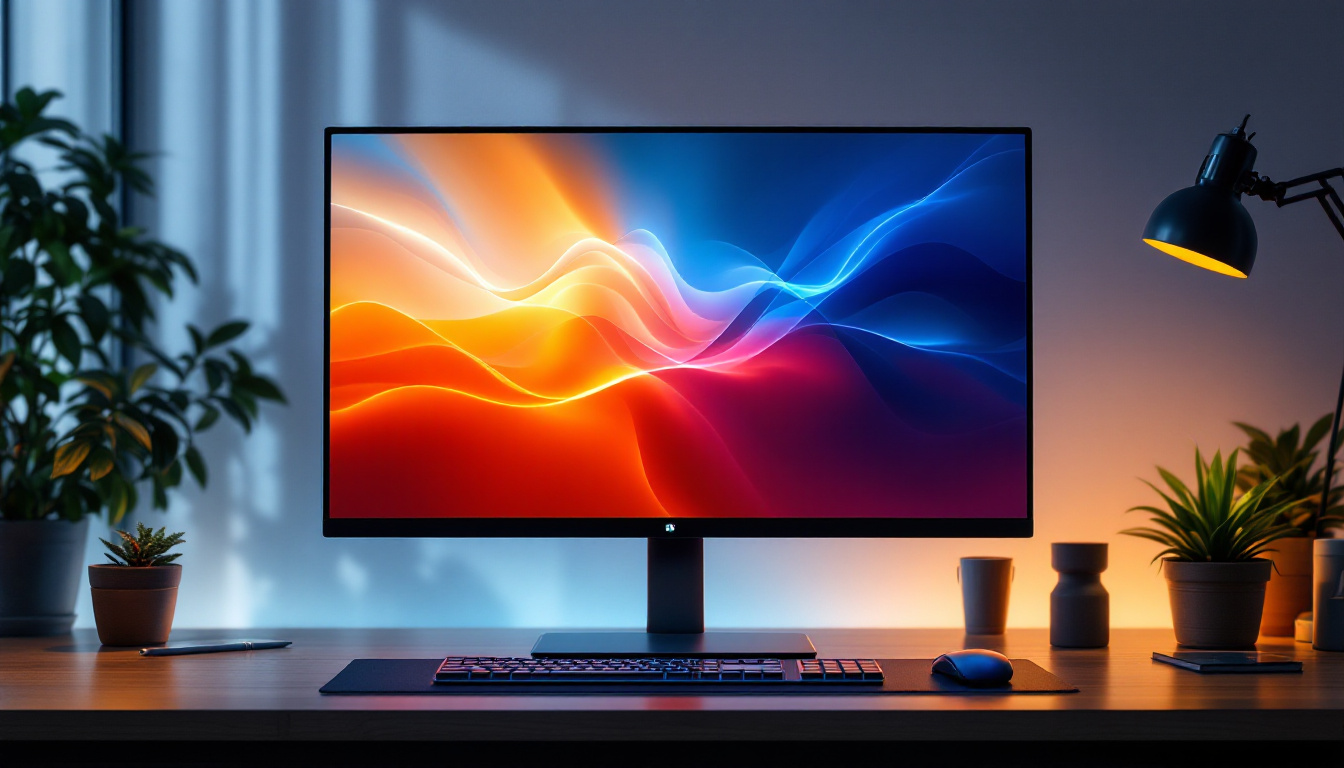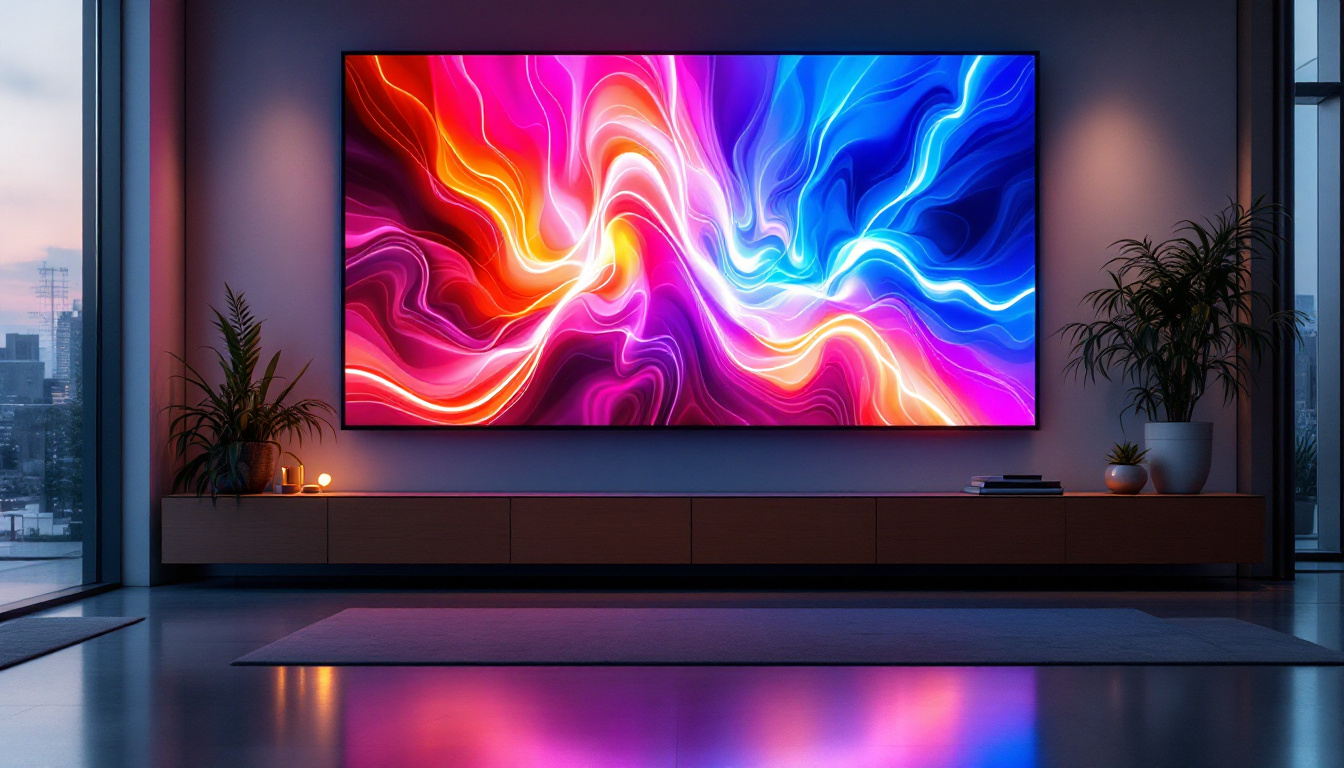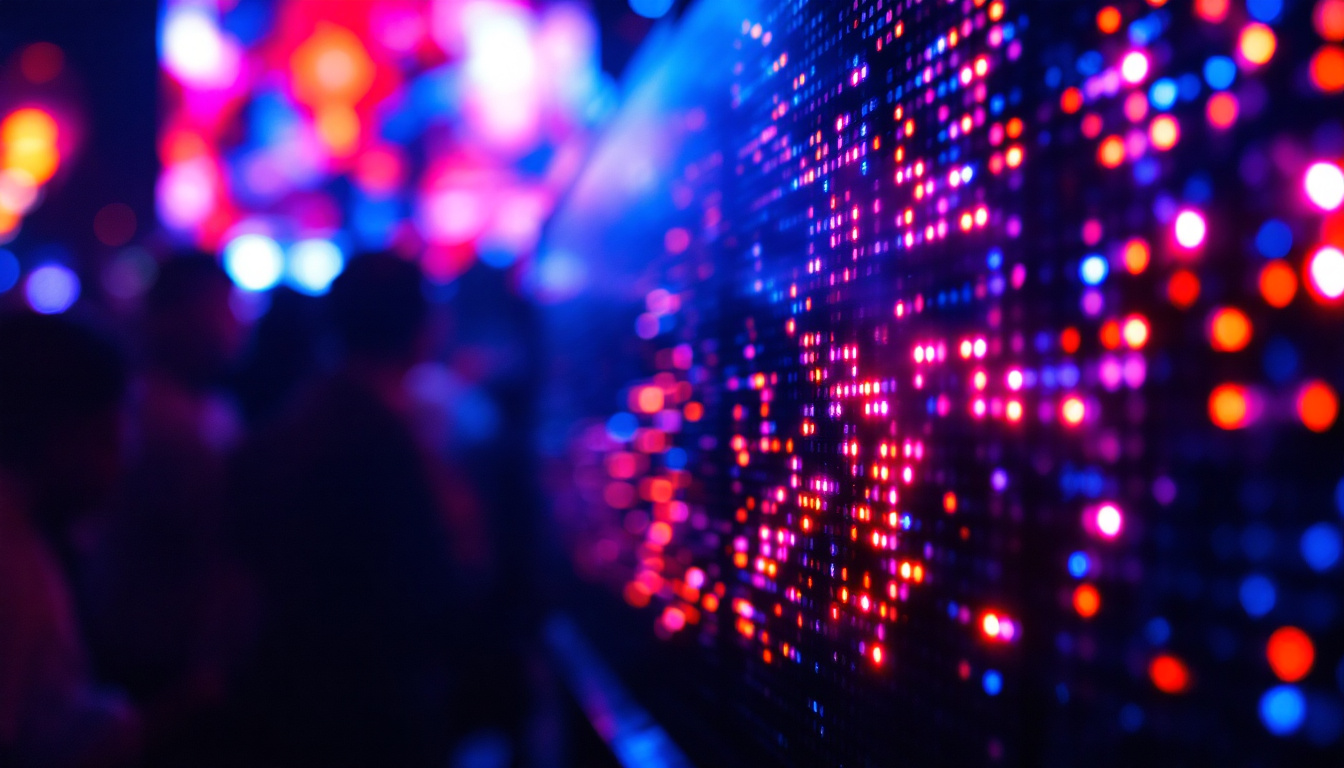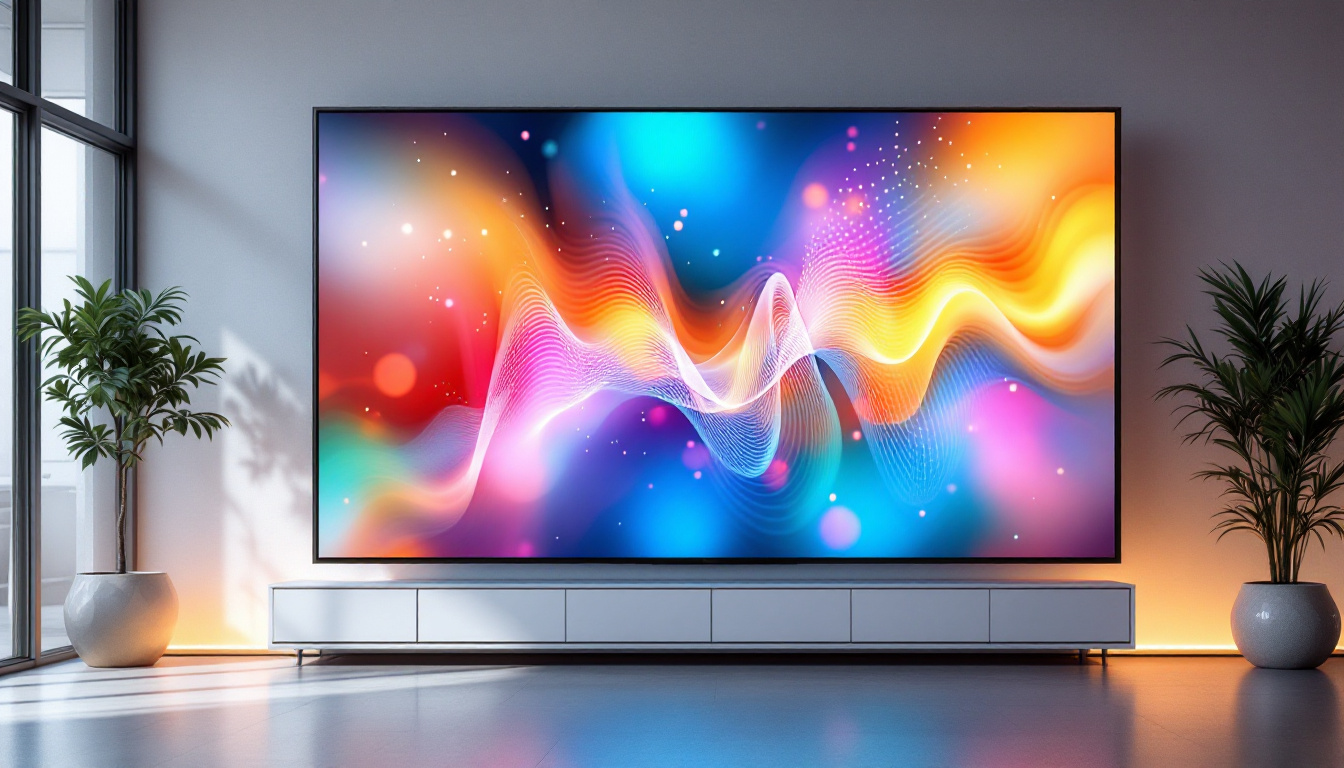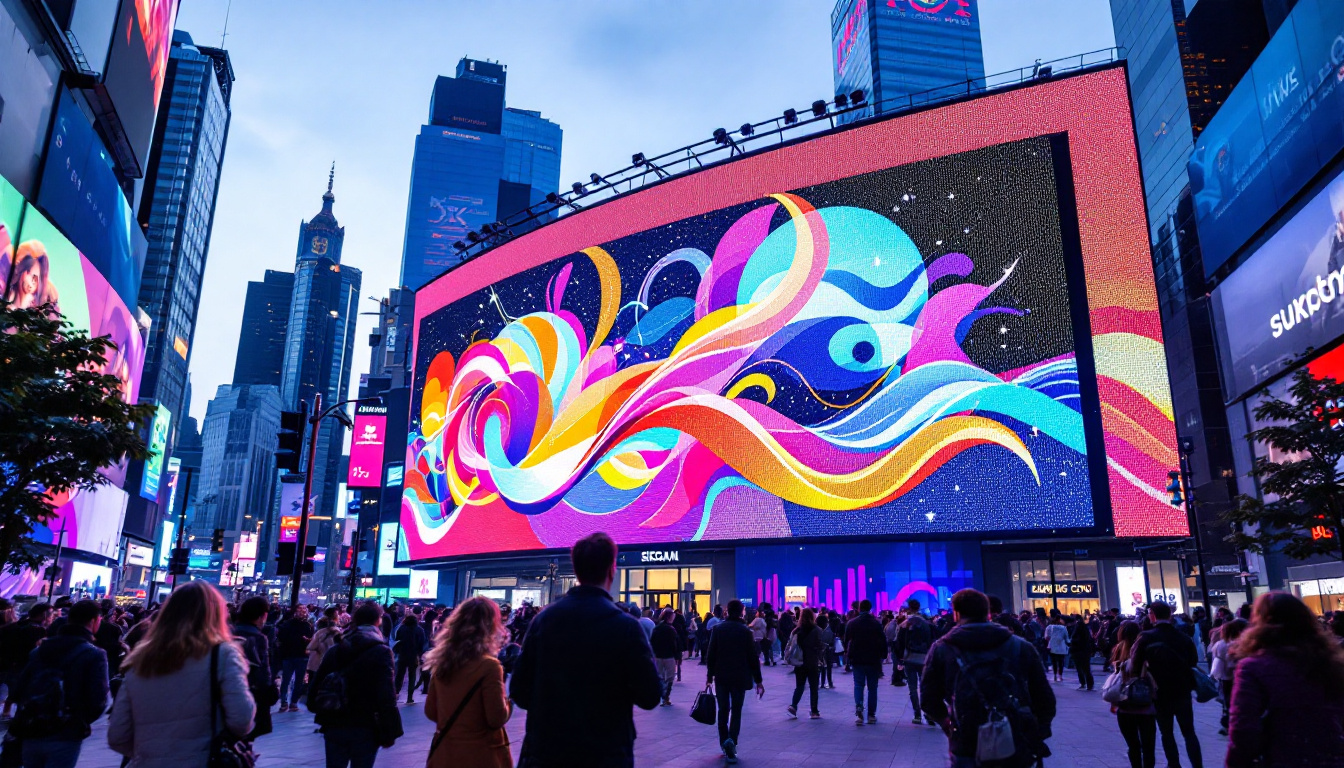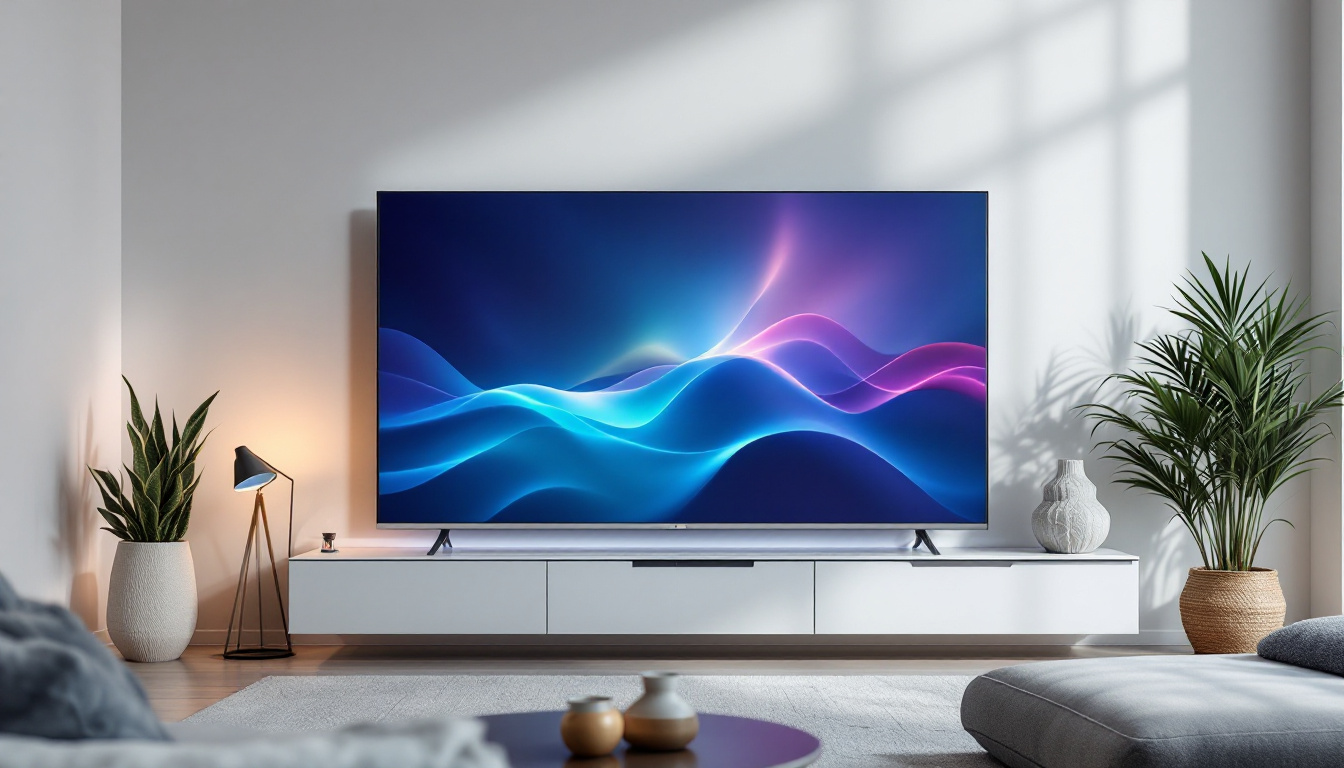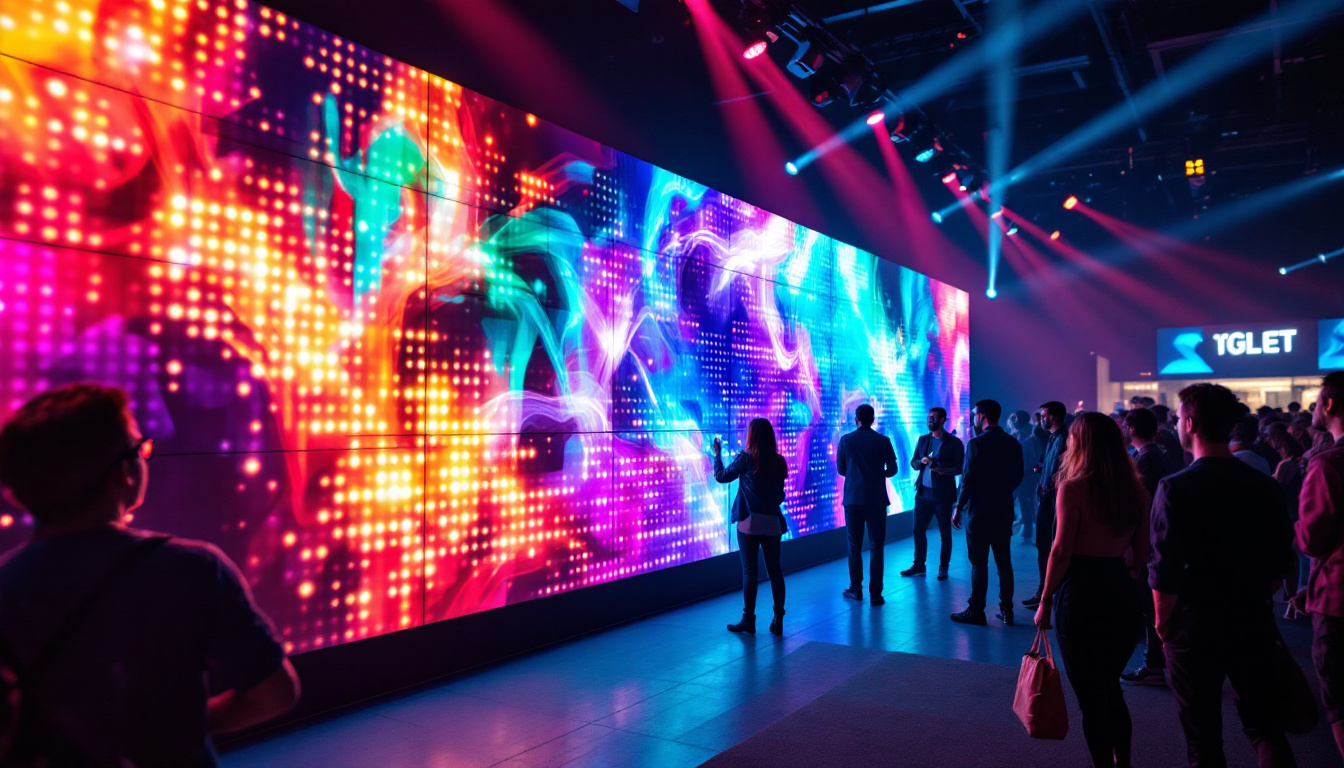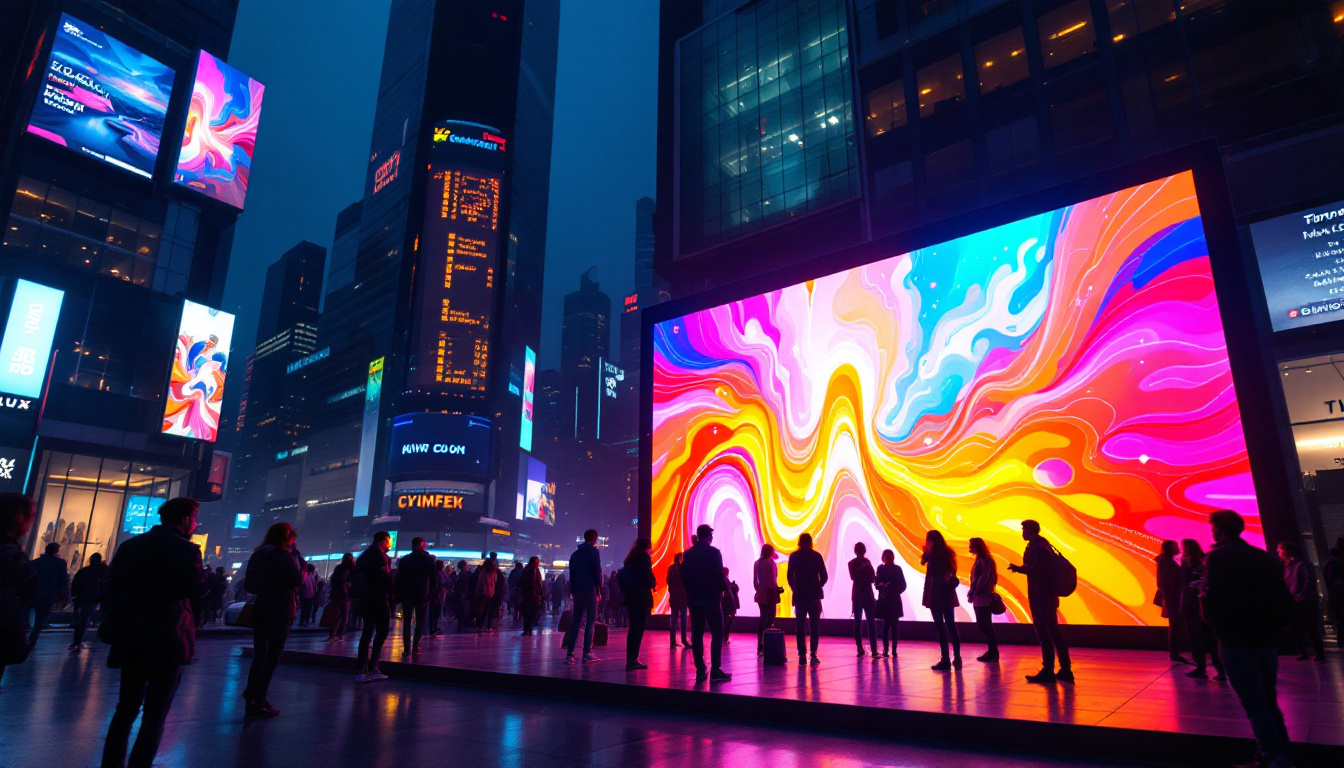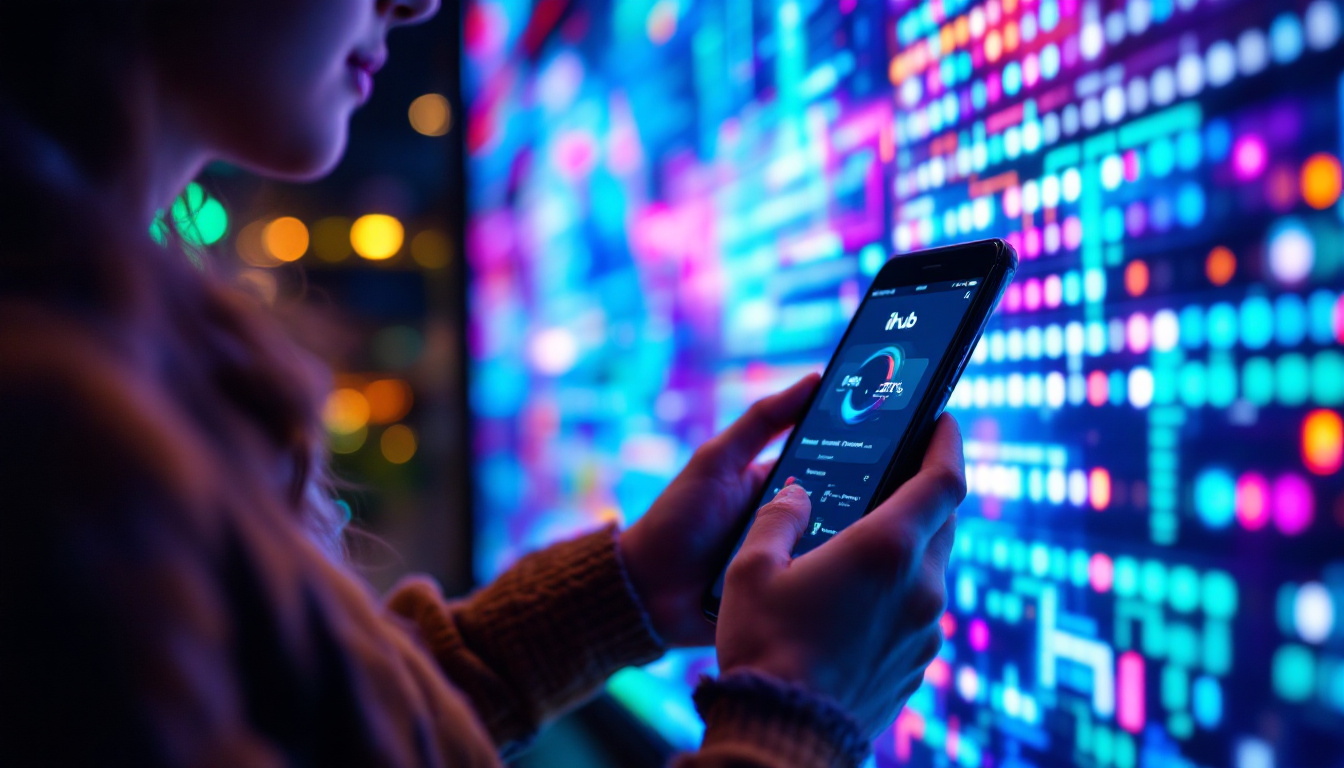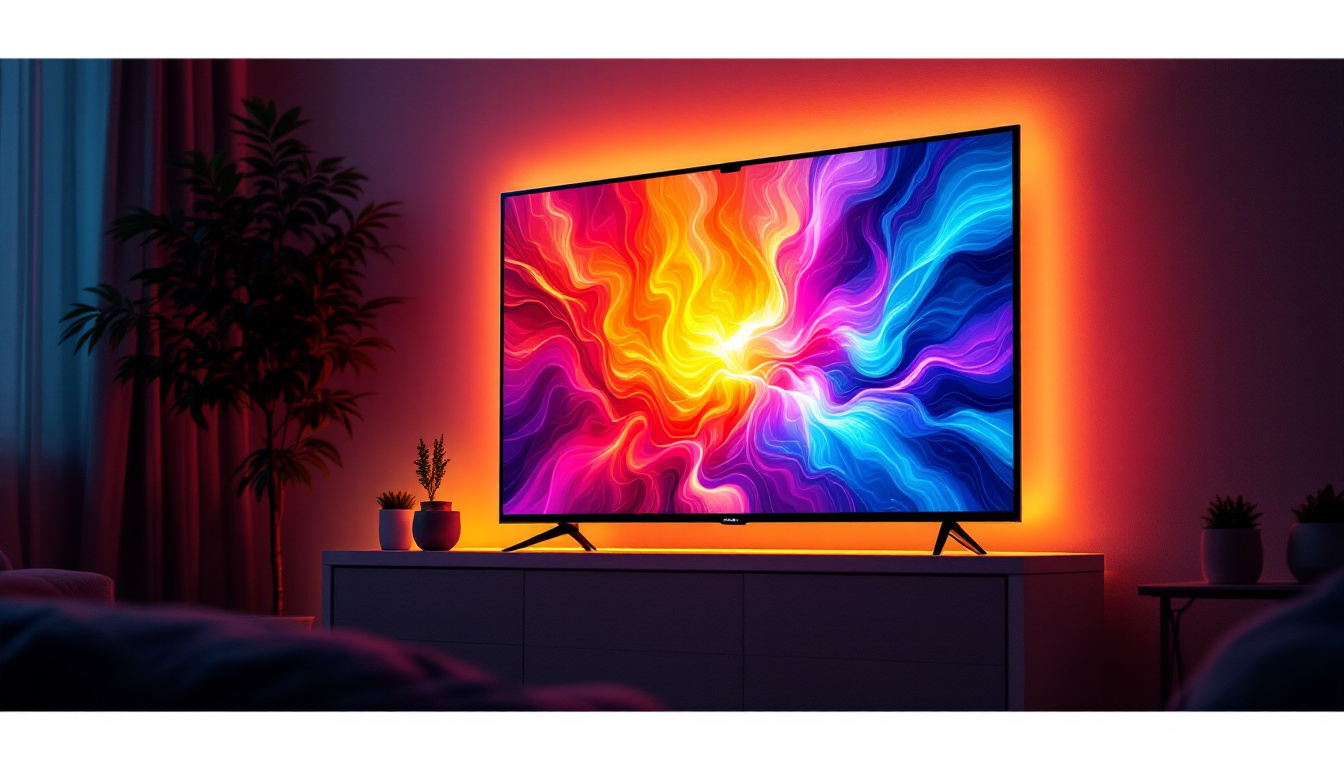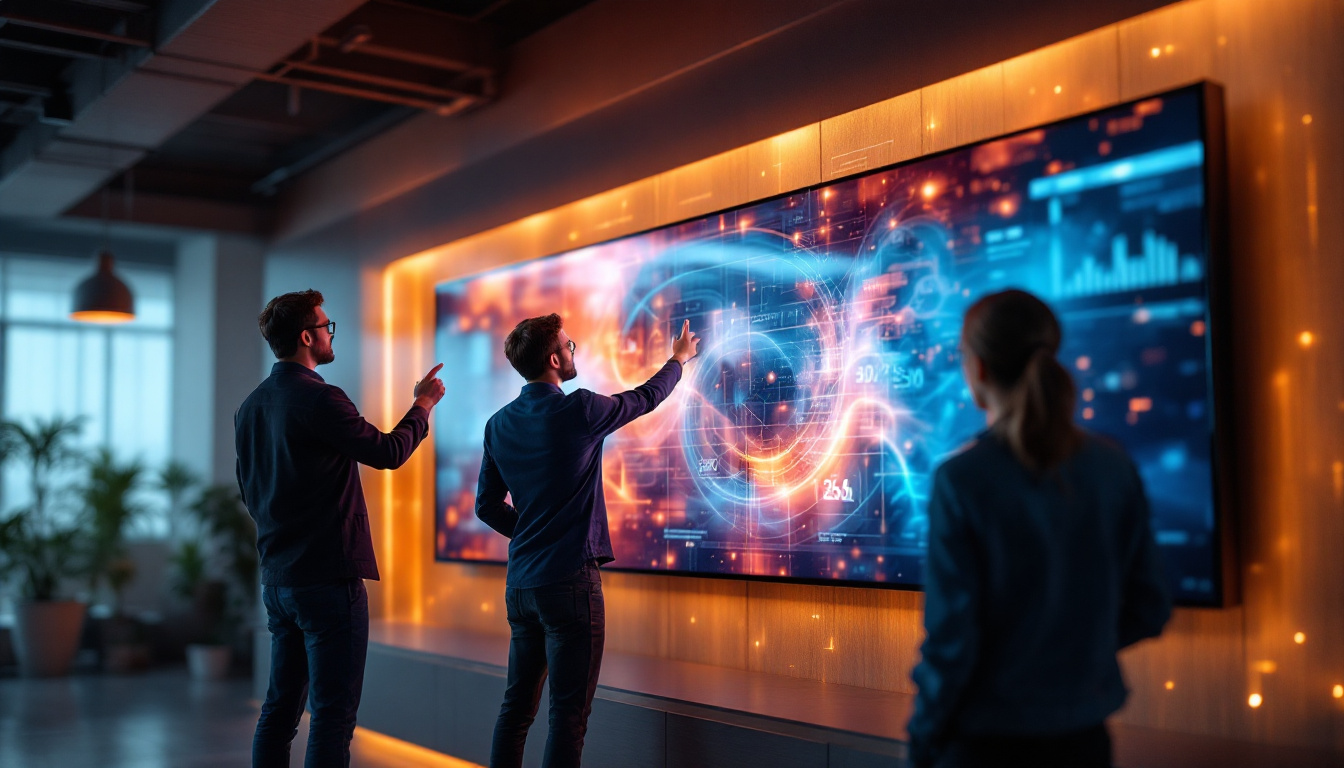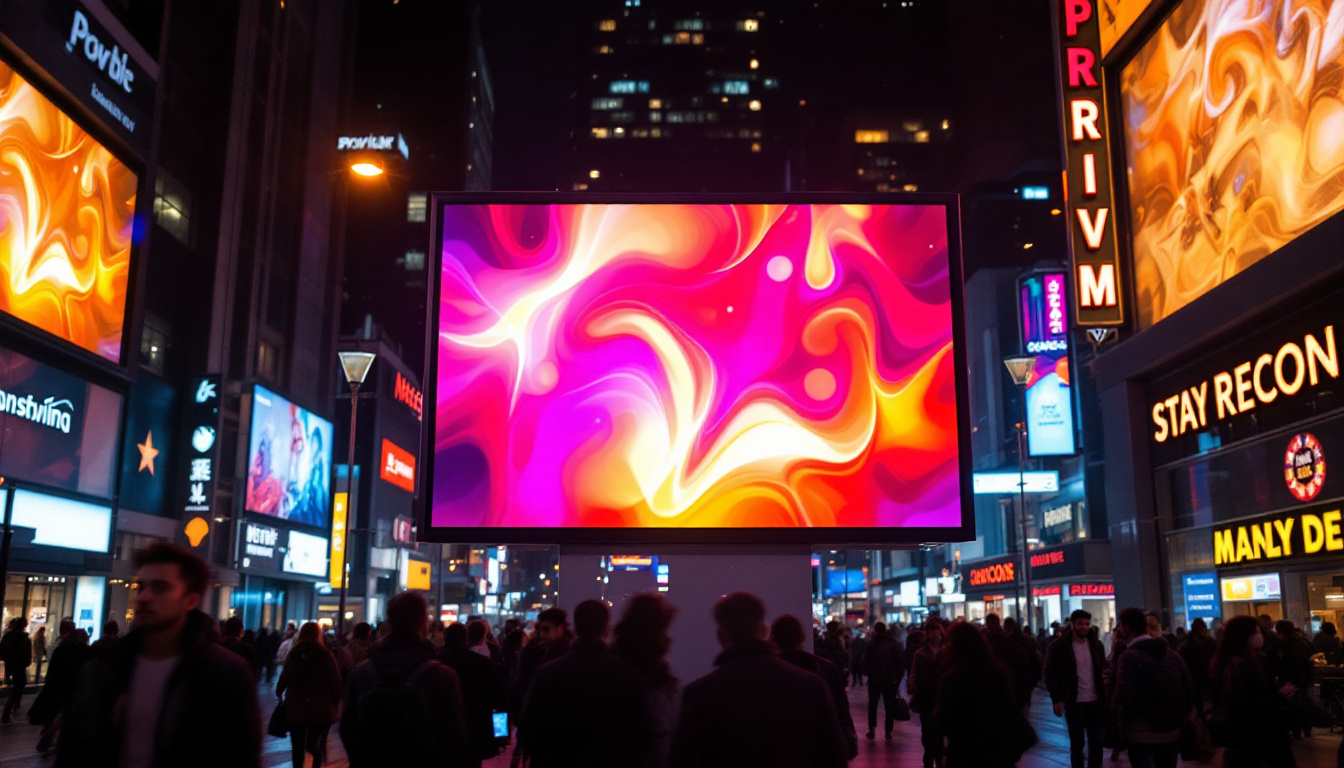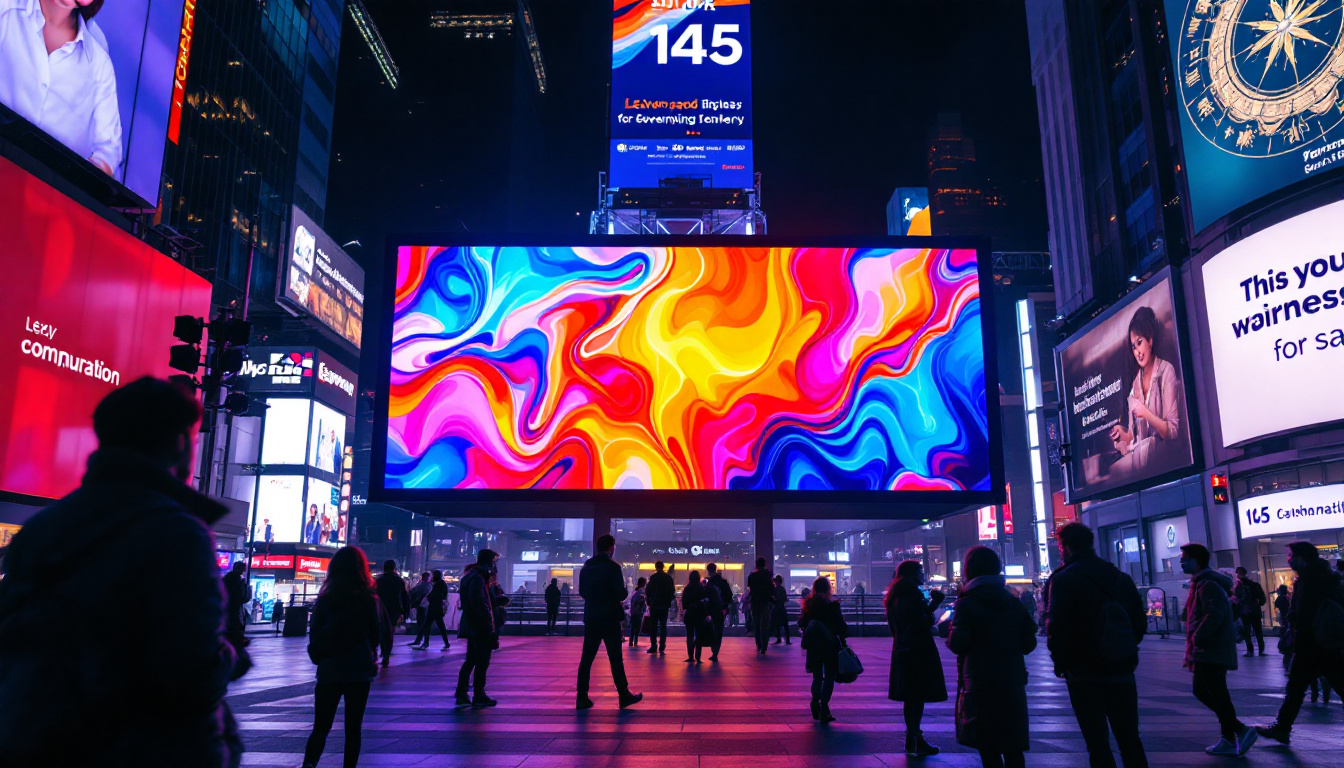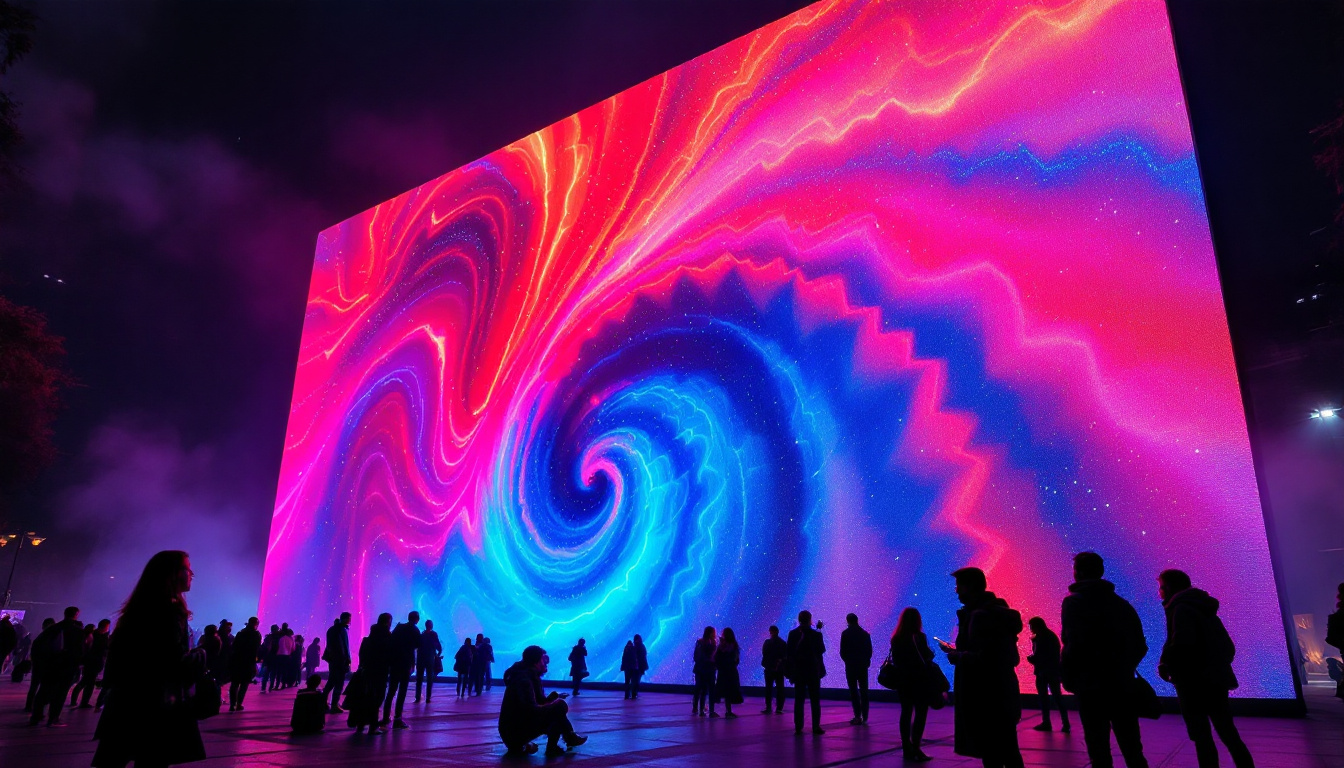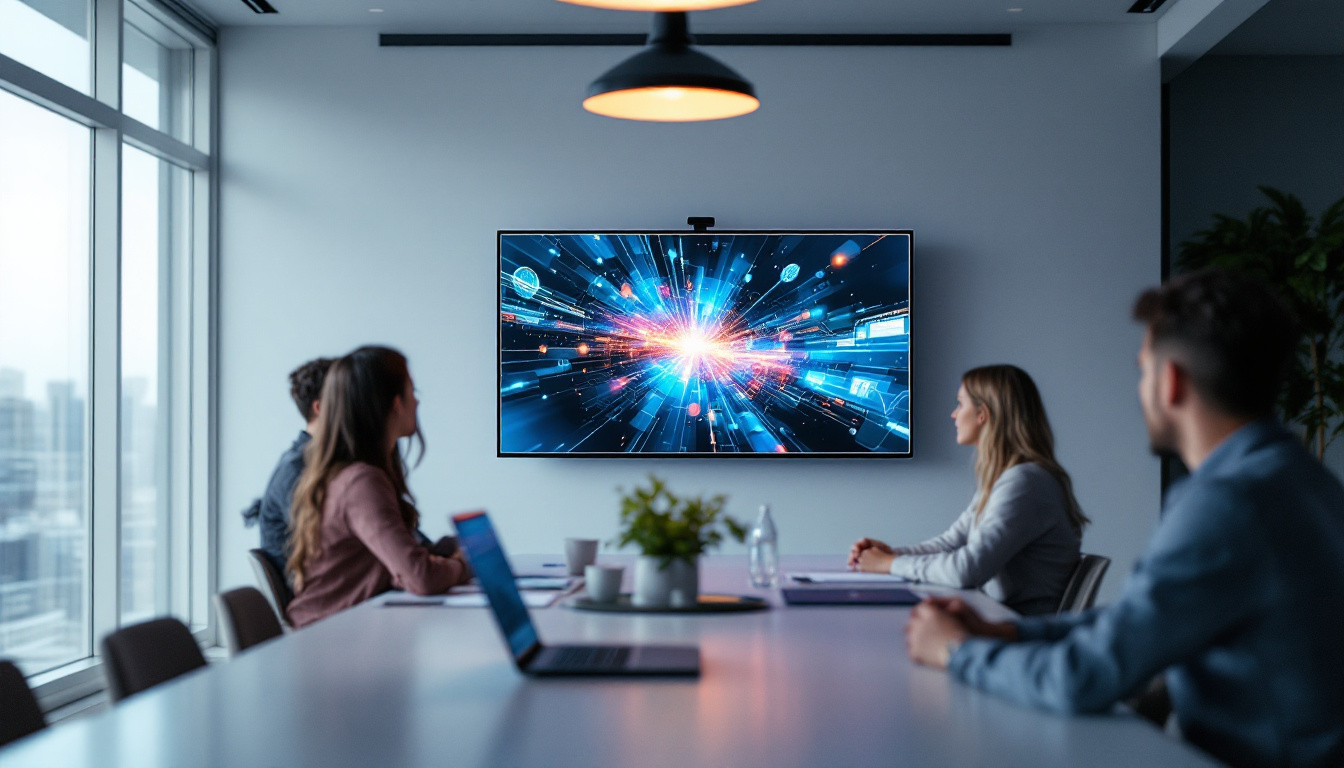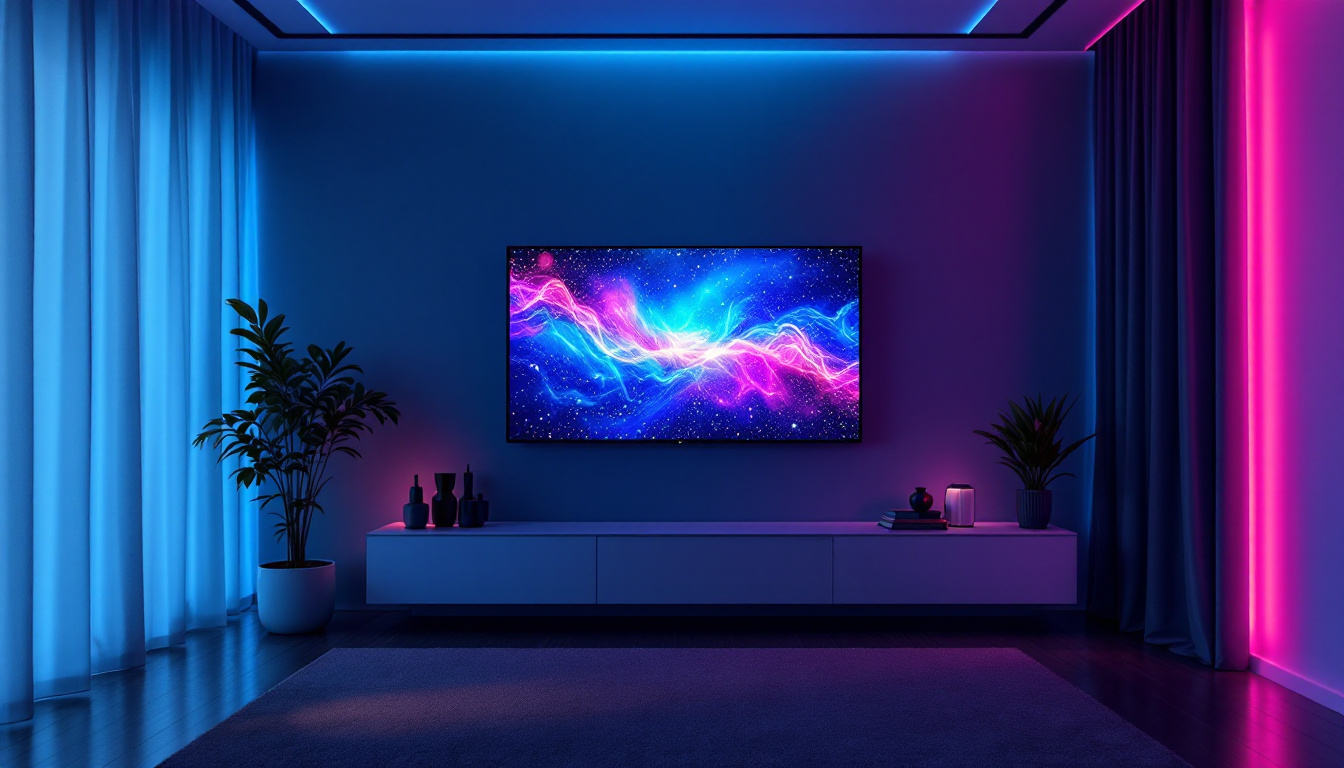In the realm of modern technology, the integration of touch screens and LED displays has revolutionized the way users interact with devices. From smartphones to large-scale digital signage, these technologies have become ubiquitous, enhancing user experience and visual appeal. This article delves into the intricate workings of touch screens and LED displays, exploring their functionalities, advantages, and applications.
Understanding LED Displays
LED (Light Emitting Diode) displays are a form of flat panel display technology that utilize light-emitting diodes to produce images. They are known for their vibrant colors, high brightness, and energy efficiency. These displays have become the standard for various applications, including televisions, computer monitors, and advertising billboards.
How LED Displays Work
At the core of an LED display is a matrix of tiny LED lights that emit red, green, and blue (RGB) colors. By adjusting the intensity of these colors, the display can create a wide spectrum of hues. The combination of these colors allows for the reproduction of detailed images and videos.
LED displays can be categorized into two main types: direct-view and backlit. Direct-view LED displays consist of individual LEDs that form the entire image, while backlit LED displays use a liquid crystal display (LCD) panel illuminated by LEDs from behind. Each type has its own advantages, with direct-view displays often providing better contrast and color accuracy.
Advantages of LED Technology
One of the primary benefits of LED displays is their energy efficiency. Compared to traditional display technologies, such as incandescent or fluorescent lighting, LEDs consume significantly less power. This not only reduces electricity costs but also contributes to a lower carbon footprint.
Additionally, LED displays offer superior brightness and contrast ratios, making them ideal for outdoor use. Their ability to maintain image quality in various lighting conditions is a key factor in their widespread adoption in advertising and public information displays.
Moreover, LED technology is highly versatile and can be adapted for various environments and applications. For instance, flexible LED screens can be used in creative installations, allowing for unique shapes and designs that were previously impossible with traditional display technologies. This adaptability has led to innovative uses in art, architecture, and stage design, where dynamic visuals can enhance the overall experience.
Another significant advantage of LED displays is their longevity. LEDs typically have a lifespan of over 50,000 hours, far exceeding that of conventional display technologies. This durability not only reduces the need for frequent replacements but also minimizes waste, aligning with growing environmental concerns. As a result, businesses and consumers alike are increasingly turning to LED displays as a sustainable option for their visual needs.
Touch Screen Technology
Touch screen technology allows users to interact with a device by touching the display directly. This intuitive interface has transformed the way people engage with technology, making it more accessible and user-friendly. Touch screens are now commonplace in smartphones, tablets, kiosks, and even home appliances.
Types of Touch Screen Technologies
There are several types of touch screen technologies, each with its own unique characteristics. The most common types include resistive, capacitive, and infrared touch screens.
Resistive touch screens consist of two flexible layers separated by a small gap. When pressure is applied, the layers touch, registering the input. This technology is known for its accuracy and ability to work with any input method, including fingers, styluses, and gloves. However, it generally lacks the clarity and responsiveness of other technologies.
Capacitive touch screens, on the other hand, use the electrical properties of the human body to detect touch. They are more responsive than resistive screens and support multi-touch gestures, making them ideal for smartphones and tablets. However, they may not work well with gloves or non-conductive objects.
Applications of Touch Screen Technology
Touch screens have found their way into a multitude of applications across various industries. In retail, interactive kiosks allow customers to browse products and make purchases seamlessly. In healthcare, touch screens facilitate patient check-ins and access to medical records, enhancing efficiency and accuracy.
Moreover, the rise of smart home devices has further integrated touch screen technology into everyday life. From controlling lighting to managing security systems, touch screens serve as the central interface for users to manage their environments.
In the automotive industry, touch screen technology has revolutionized the way drivers interact with their vehicles. Modern cars often feature large touch displays that control navigation, entertainment, and climate settings, allowing for a more streamlined and user-friendly experience. This shift not only enhances convenience but also promotes safer driving by minimizing the need for physical buttons and switches, allowing drivers to focus more on the road.
Additionally, touch screens have made significant inroads into the educational sector. Interactive whiteboards and tablets equipped with touch technology are increasingly used in classrooms, enabling dynamic learning experiences. Students can engage with educational content in a more hands-on manner, fostering collaboration and creativity. This shift towards interactive learning tools is helping to prepare students for a technology-driven future, where digital literacy is paramount.
Integrating Touch Screens with LED Displays
The combination of touch screen technology and LED displays has led to the development of interactive digital signage. This integration allows users to engage with content in a dynamic way, enhancing the overall experience. Such displays are increasingly used in retail environments, museums, and public information systems.
Benefits of Interactive LED Displays
Interactive LED displays offer numerous advantages over traditional static displays. They can provide real-time information, engage users with interactive content, and enhance brand visibility. The ability to touch and manipulate content makes information more accessible and engaging for users.
Moreover, these displays can be easily updated with new content, allowing businesses to respond quickly to changing information or promotions. This flexibility is particularly valuable in fast-paced environments, such as retail and hospitality. For instance, a restaurant can showcase daily specials or limited-time offers directly on the display, enticing customers and driving sales. Furthermore, the interactive nature of these displays encourages customers to explore products or services in greater depth, leading to informed purchasing decisions.
Challenges and Considerations
Despite the many benefits, there are challenges associated with integrating touch screens and LED displays. One significant concern is durability, especially in high-traffic areas where screens may be subjected to frequent use. Ensuring that the screens are resistant to scratches and damage is crucial for maintaining a professional appearance.
Additionally, the cost of implementing interactive LED displays can be a barrier for some businesses. While prices have decreased over time, the initial investment may still be significant, particularly for large-scale installations. However, the long-term benefits often outweigh the initial costs, making them a worthwhile investment. Businesses should also consider the ongoing maintenance and software updates required to keep the displays functioning optimally. Regular maintenance not only prolongs the lifespan of the equipment but also ensures that the content remains fresh and engaging, which is essential for retaining customer interest.
Future Trends in Touch Screen and LED Technology
As technology continues to evolve, the future of touch screens and LED displays looks promising. Innovations in materials and design are paving the way for even more advanced and versatile displays. Flexible and transparent displays are on the horizon, offering new possibilities for product design and user interaction. These developments not only enhance aesthetic appeal but also open the door to new applications, such as smart windows that can change opacity based on user preferences or environmental conditions, providing both privacy and energy efficiency.
Advancements in Display Technology
One of the most exciting developments in display technology is the emergence of microLED displays. These displays utilize microscopic LEDs to create images, offering even greater efficiency and brightness than traditional LED displays. MicroLED technology promises to deliver superior color accuracy and contrast ratios, making it an attractive option for high-end applications. Furthermore, the durability and longevity of microLEDs mean that they can withstand harsher environments, making them suitable for outdoor advertising and other demanding settings.
Additionally, advancements in touch screen technology are also underway. Haptic feedback, which provides tactile sensations in response to touch, is becoming increasingly popular. This feature enhances the user experience by simulating the feel of physical buttons, making touch interactions more intuitive and satisfying. As developers continue to refine this technology, we can expect to see even more sophisticated haptic systems that can convey a range of textures and sensations, further blurring the lines between digital and physical interactions.
Impact on Various Industries
The integration of advanced touch screen and LED display technologies is set to impact various industries significantly. In education, interactive displays are transforming traditional learning environments, allowing for more engaging and collaborative experiences. Students can interact with content in real-time, enhancing retention and understanding. Moreover, these technologies facilitate remote learning, enabling students to participate in interactive lessons from anywhere in the world, thus democratizing access to quality education.
In the automotive industry, touch screens are becoming central to vehicle interfaces. With the rise of electric and autonomous vehicles, intuitive touch controls will play a crucial role in enhancing user experience and safety. As technology progresses, the integration of touch screens and LED displays will continue to shape how users interact with their vehicles. Beyond navigation and entertainment, future interfaces may incorporate augmented reality, providing drivers with real-time data overlays that enhance situational awareness and assist in decision-making, ultimately contributing to safer driving experiences.
Conclusion
Touch screens and LED displays have become integral components of modern technology, transforming the way users interact with devices and information. The synergy between these technologies has opened up new avenues for engagement, making information more accessible and visually appealing.
As advancements continue to emerge, the future of touch screens and LED displays promises to be even more dynamic and interactive. From retail to education, the impact of these technologies will be felt across various sectors, enhancing user experiences and driving innovation.
In conclusion, understanding the intricacies of touch screens and LED displays is essential for anyone looking to navigate the ever-evolving landscape of technology. As these technologies continue to advance, they will undoubtedly play a pivotal role in shaping the future of human-computer interaction.
Explore the Future of Visual Engagement with LumenMatrix
Ready to elevate your brand’s visual impact and engage with your audience in a more dynamic way? Discover LumenMatrix’s innovative LED display solutions, where cutting-edge technology meets creative design. From vibrant Indoor and Outdoor LED Wall Displays to versatile Vehicle and Sports LED Displays, LumenMatrix offers a wide array of options to captivate and mesmerize viewers. Embrace the future of digital signage with our All-in-One LED Displays, LED Posters, and even Custom solutions tailored to your unique needs. Don’t just share your message—make it unforgettable. Check out LumenMatrix LED Display Solutions today and transform your visual communication into an extraordinary experience.

